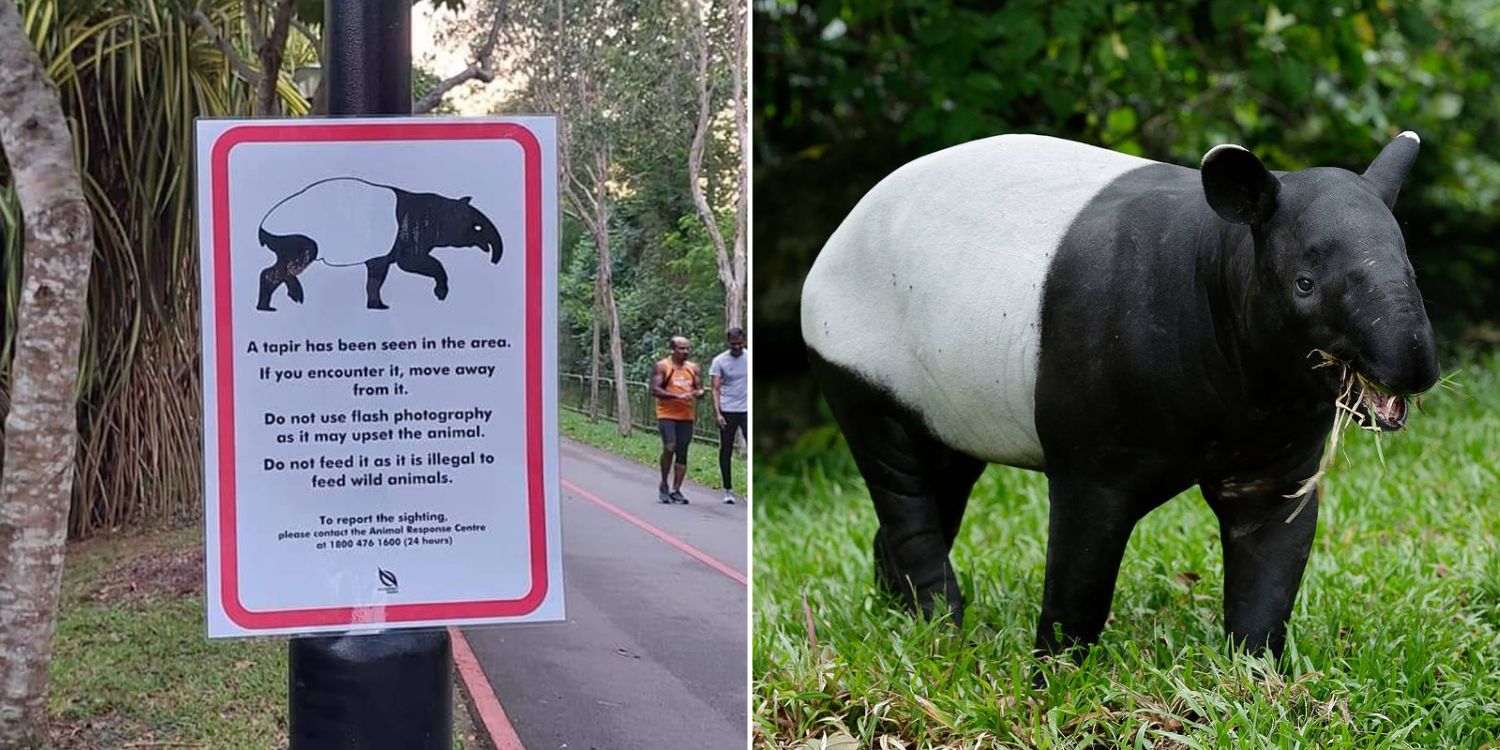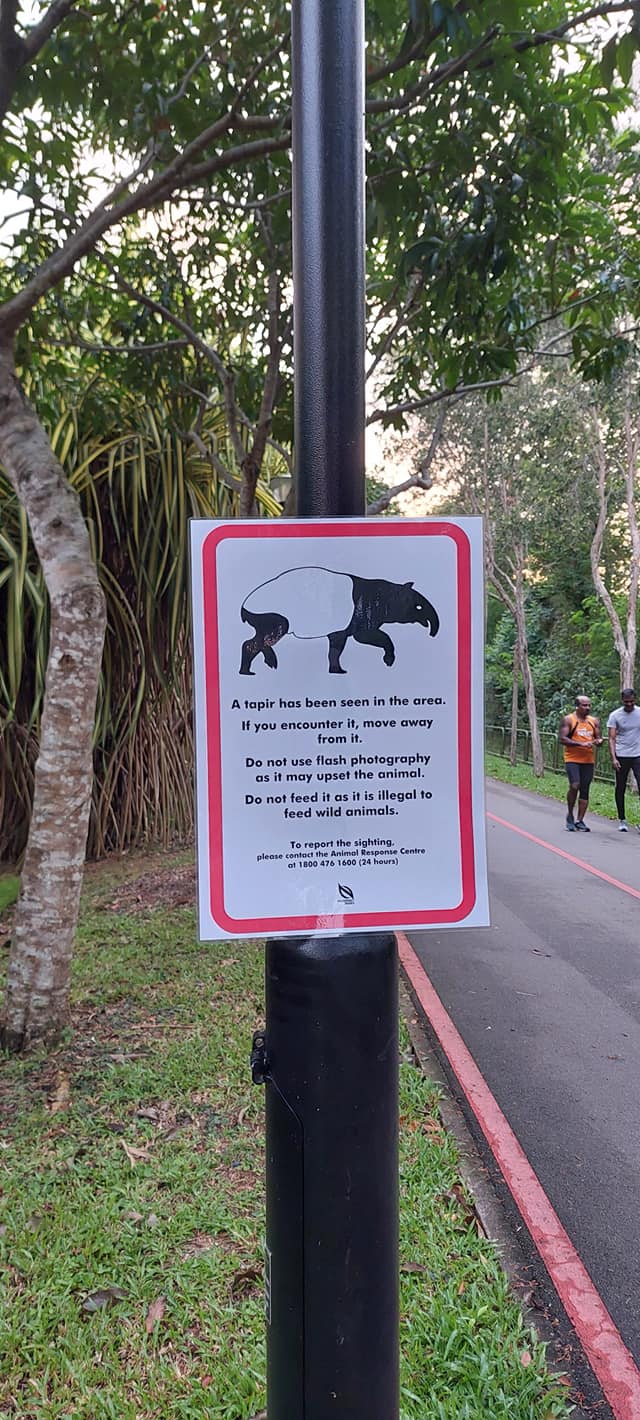NParks Puts Up Sign In Punggol Warning Public Of Tapir Sighting
Last week, the rare sight of a tapir galloping past a cyclist in a park connector at Punggol went viral.
The National Parks Board (NParks) has now put up signs warning the public of sightings of the animal in the area.
The board has urged members of the public to stay away if they do come across one and refrain from using flash photography.
NParks puts up sign warning of tapir sighting in Punggol
On 17 Sep and 20 Sep, respectively, two netizens posted an image of the sign located at Sungei Serangoon Park Connector.
The connector leads from Punggol Park to Punggol Promenade, and is part of the cycling network where the last sighting of a tapir occurred.
The sign warns that a tapir was seen in the area. As such, members of the public should keep away from it if they encounter one in the vicinity.
In addition, they should refrain from using flash photography as it may upset the animal.
They should also avoid feeding it, as giving wild animals food is illegal in Singapore.
Sightings of tapir rare in Singapore
Such sightings are rare, as the animal is not native to Singapore. The last one occurred just a week ago, on 10 Sep, at around 6.45am.

Source: Pong Posadas on Facebook
A man said he was on a morning cycling trip when he saw the tapir gallop past him.
Continuing with the ride, he filmed it at a safe distance while joggers in the area stopped to stare.
The video soon became viral on Facebook with over 1,600 shares.
Netizens suggested the animal likely headed back across the waters to Malaysia, where it probably came from, which was the case for another tapir sighting back in July.
Endangered Tapir Spotted At Punggol Park Connector, Most Likely Swam To S’pore From M’sia
Spotted in the same vicinity of the park connector network in Punggol, the Animal Concerns Research and Education Society (ACRES) confirmed that the animal had re-entered the sea and hopefully found a suitable habitat at the time.
The International Union for Conservation of Nature (IUCN) currently also lists the species as endangered. This is due to a population decline resulting from habitat loss, hunting, and road kills.
As such, members of the public are advised to adhere to NParks’ instructions and stay clear of the animal.
Have news you must share? Get in touch with us via email at news@mustsharenews.com.
Featured image adapted from Facebook and Mandai Wildlife Reserve on Facebook.









